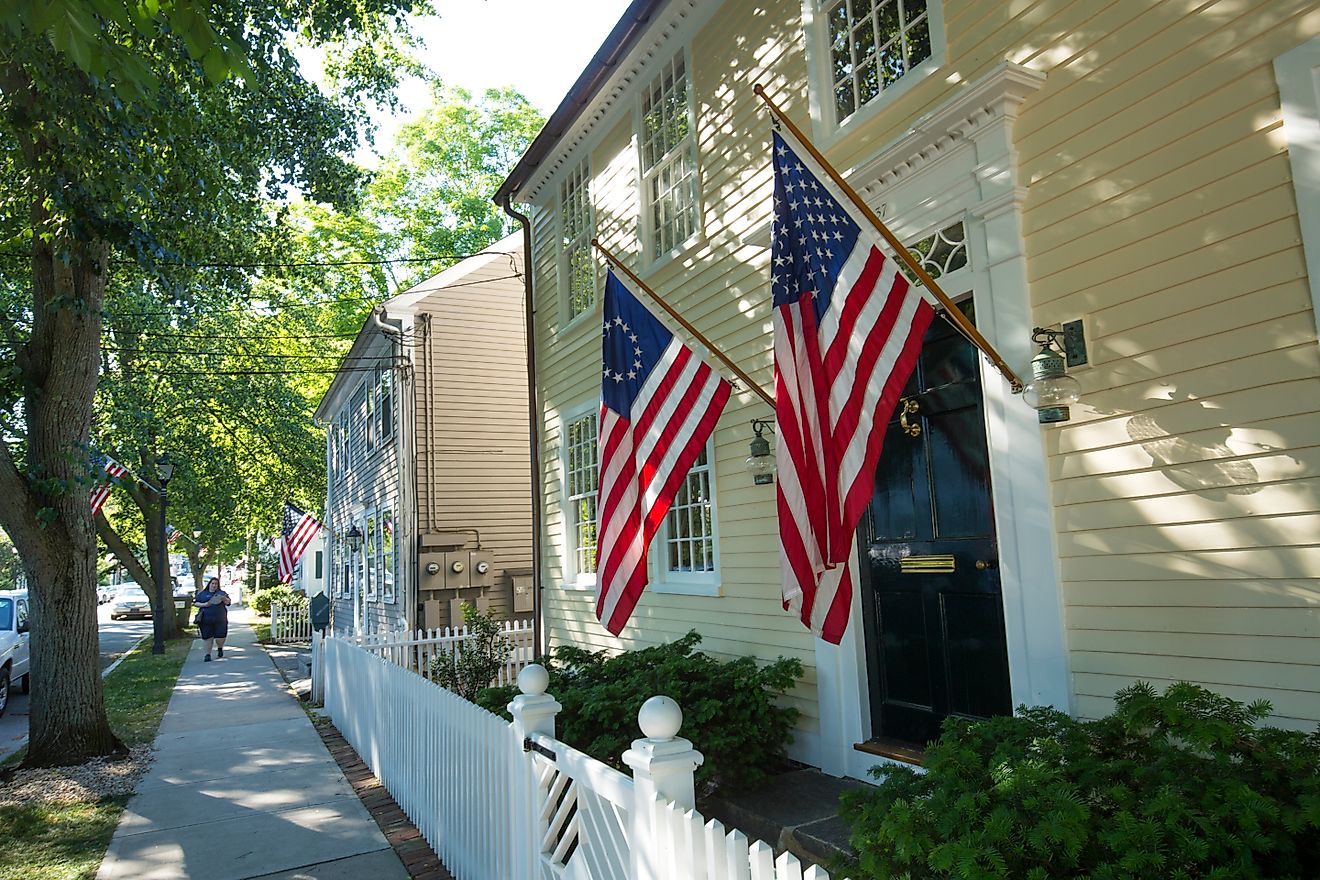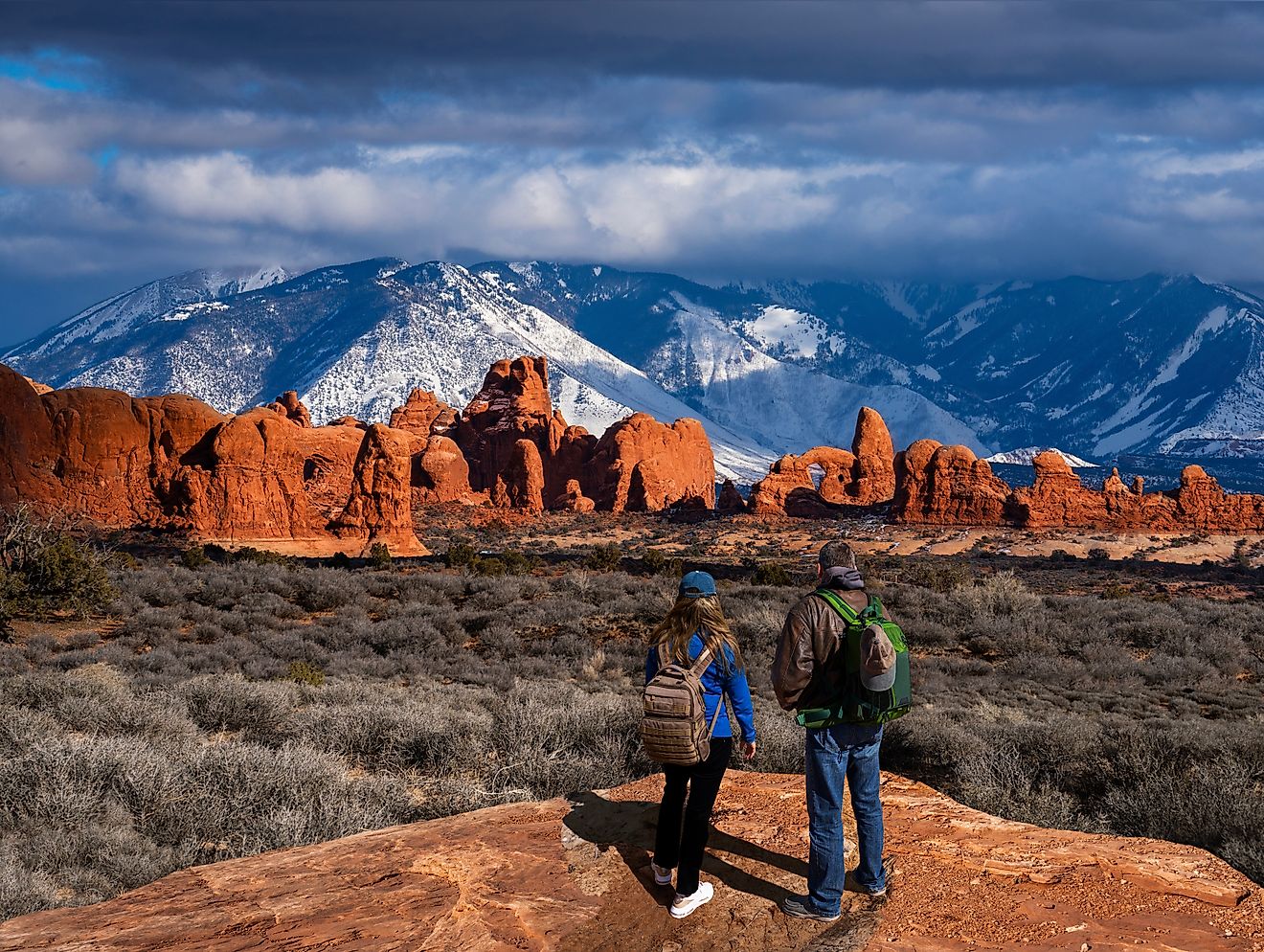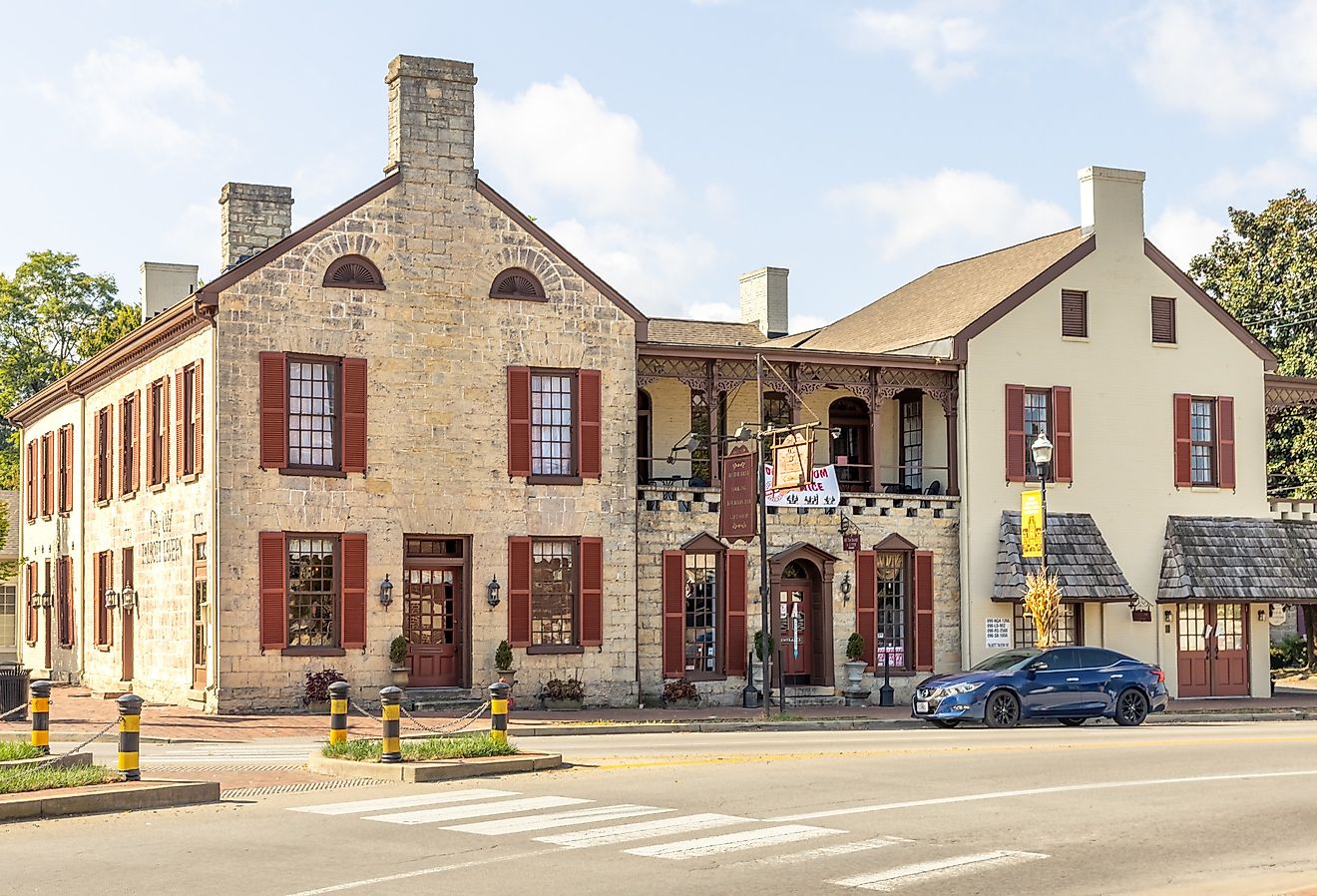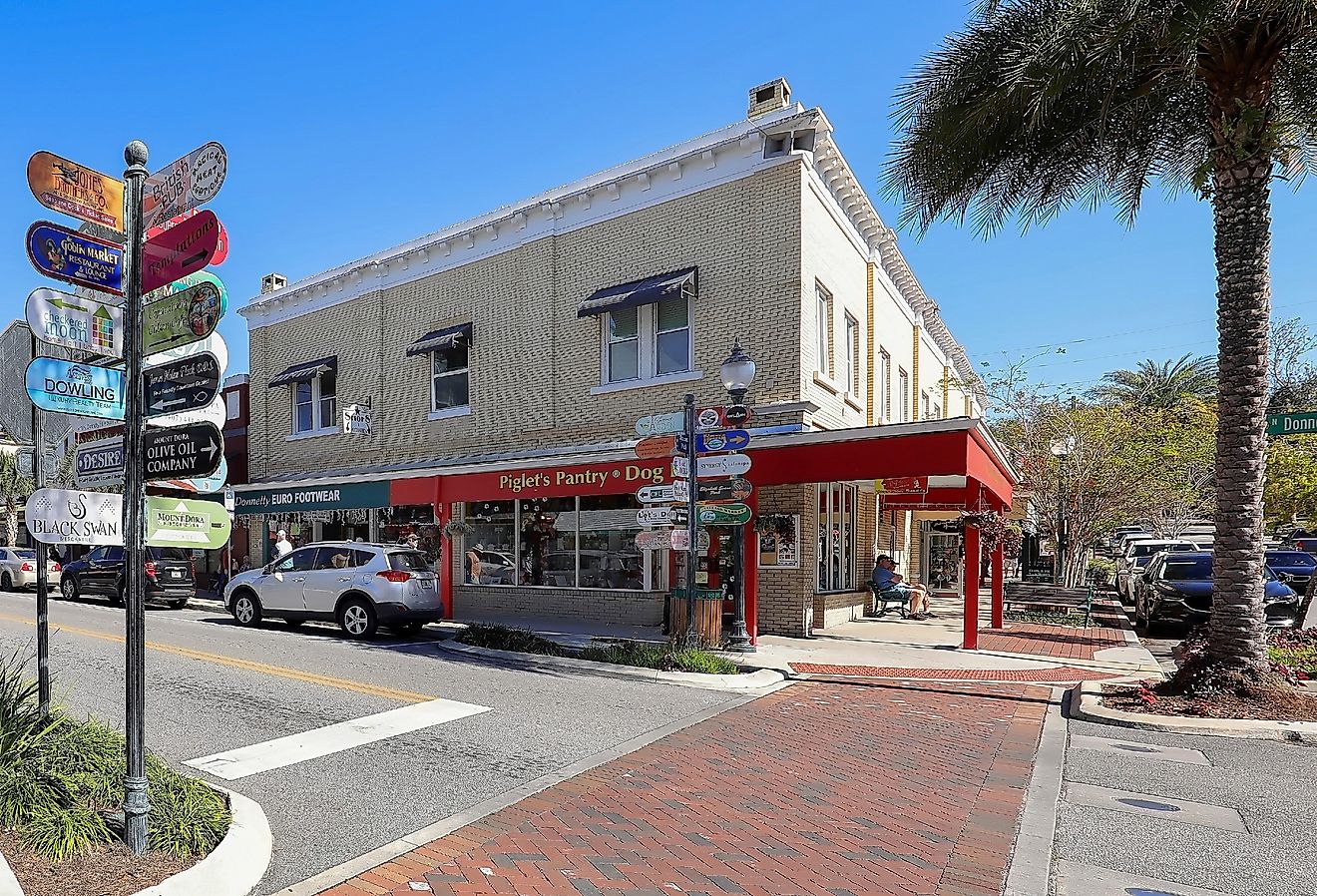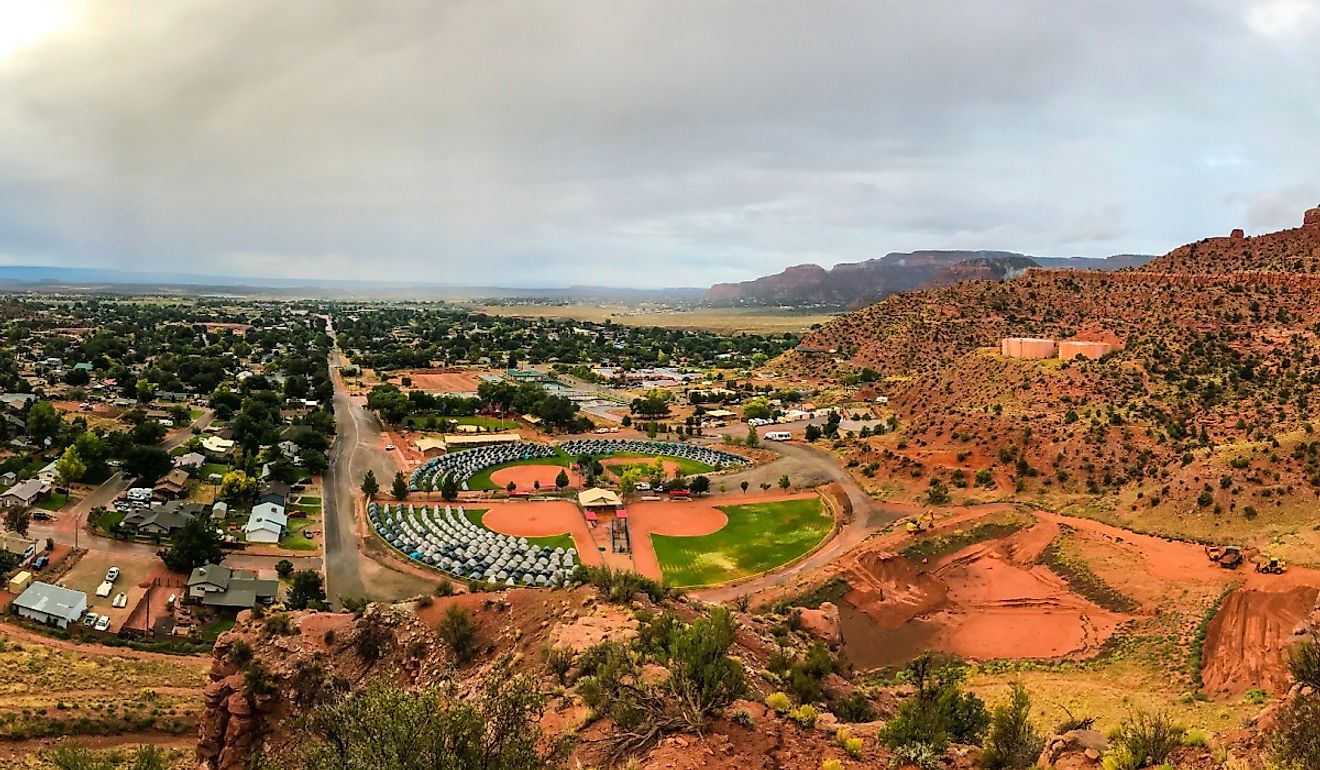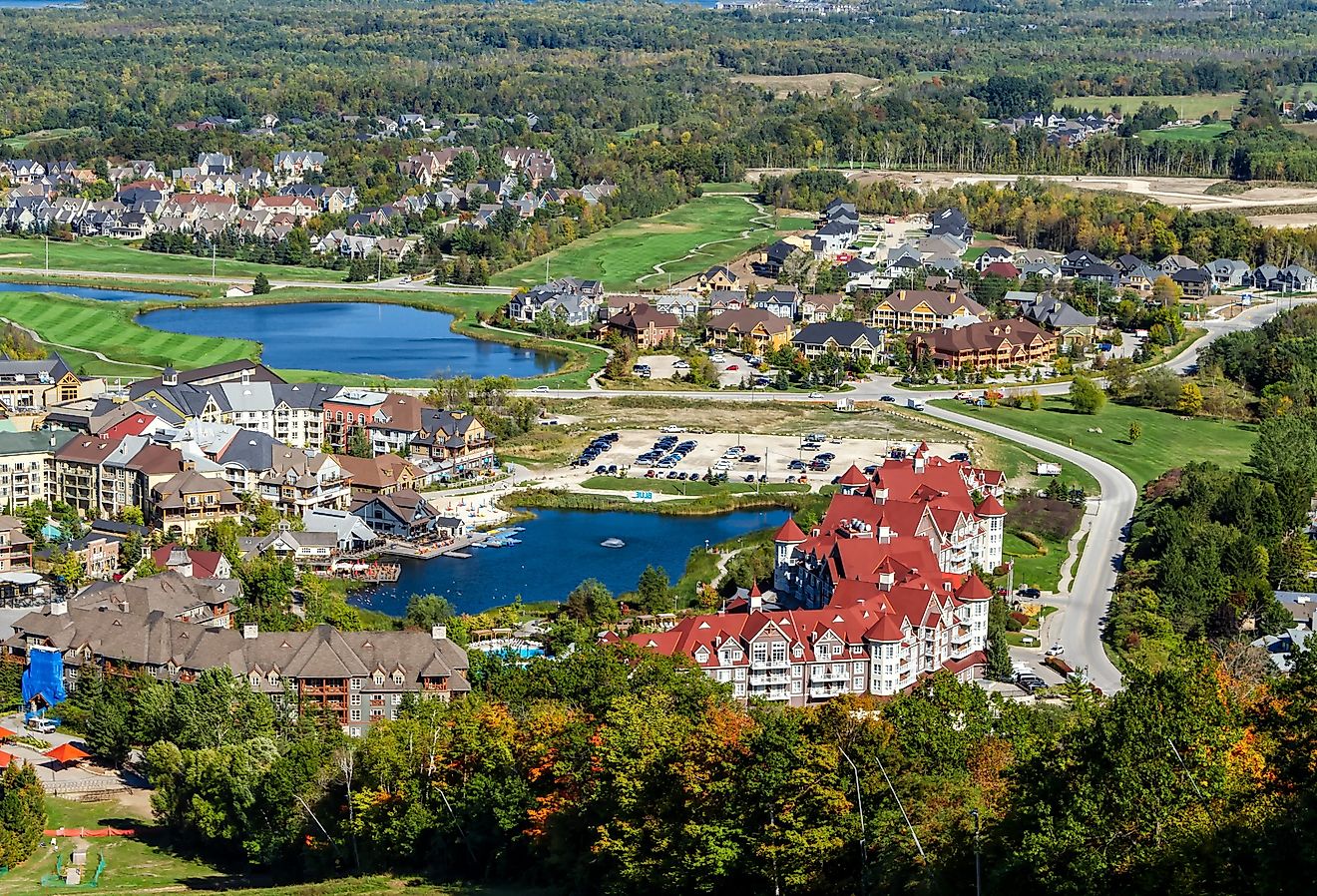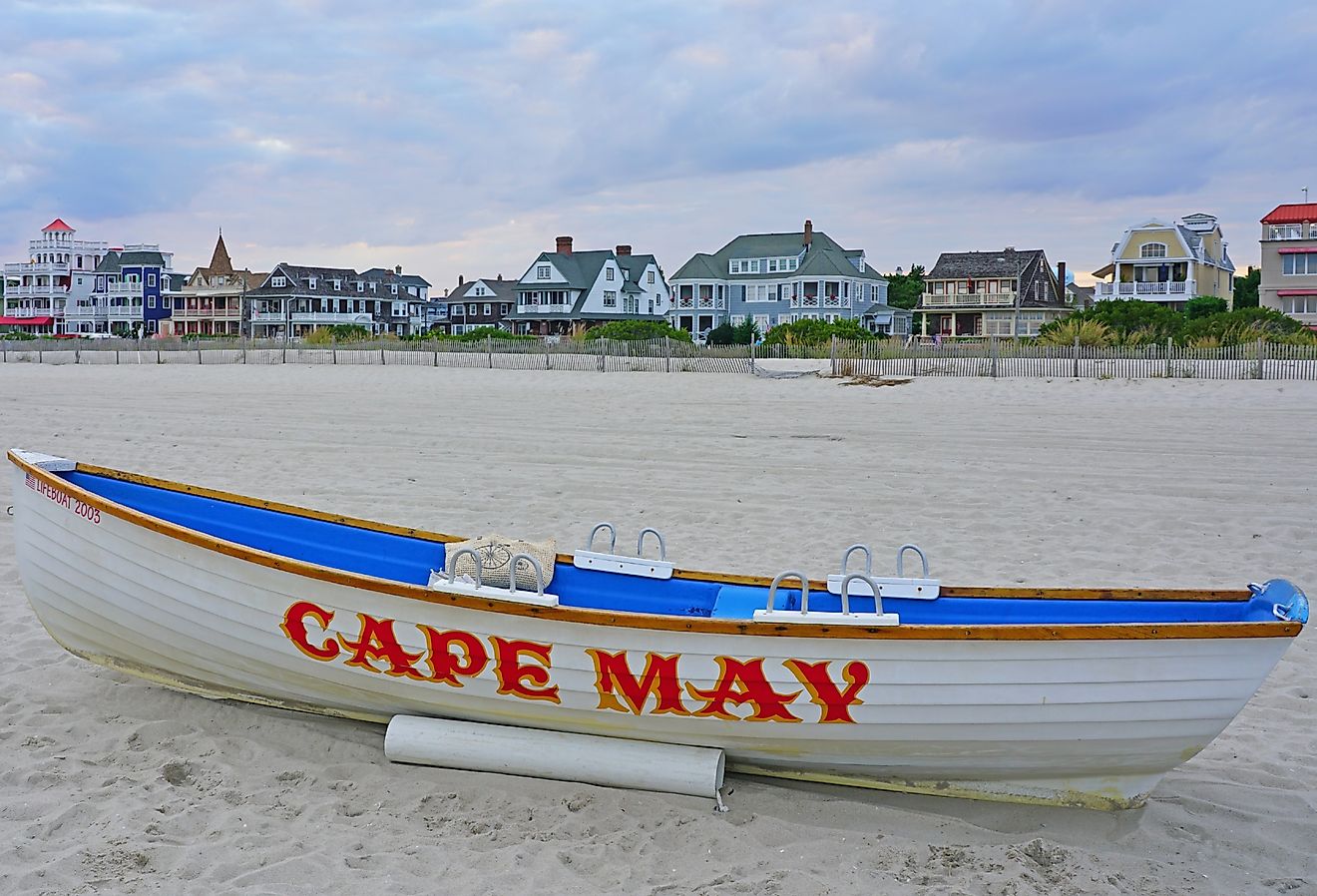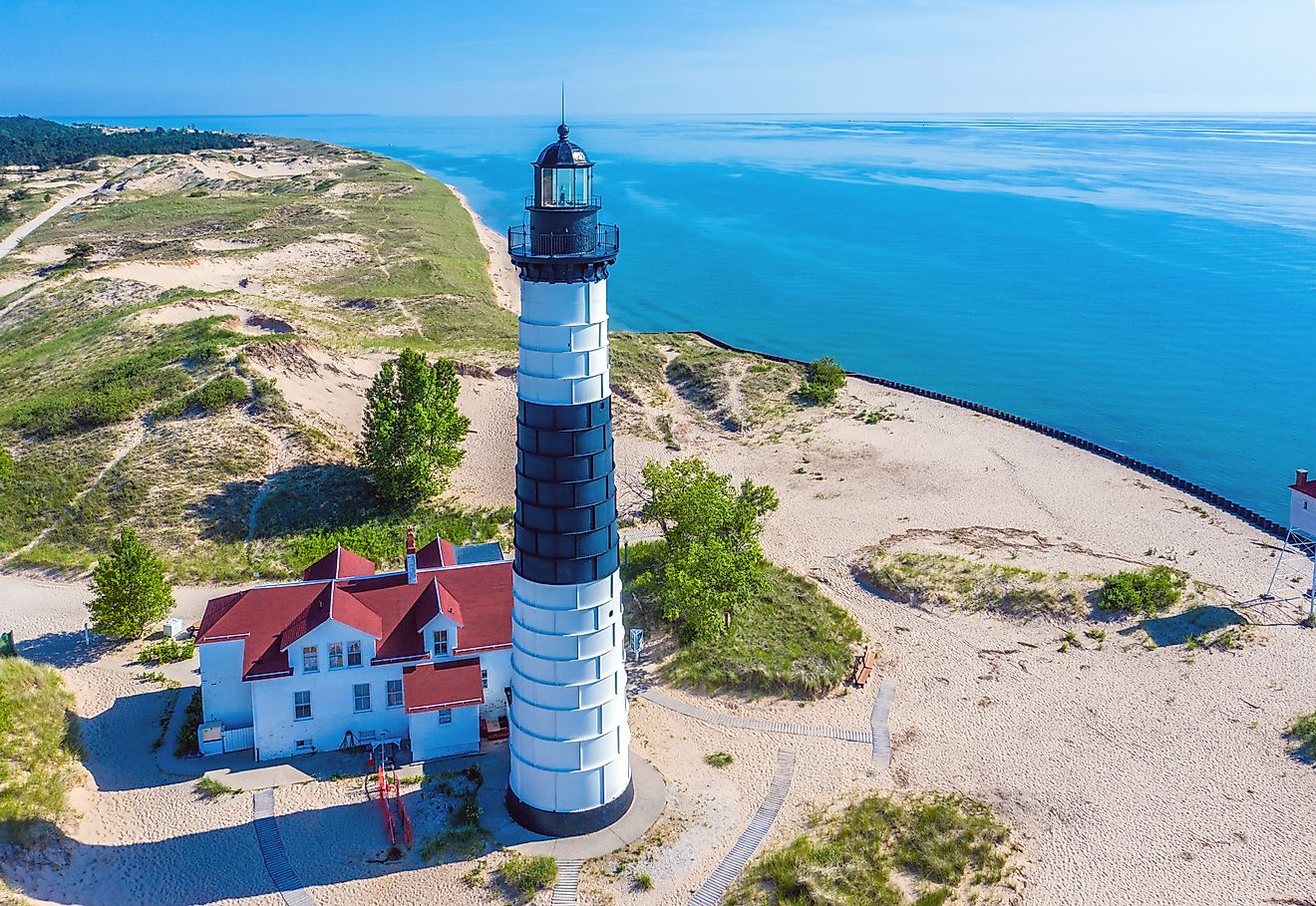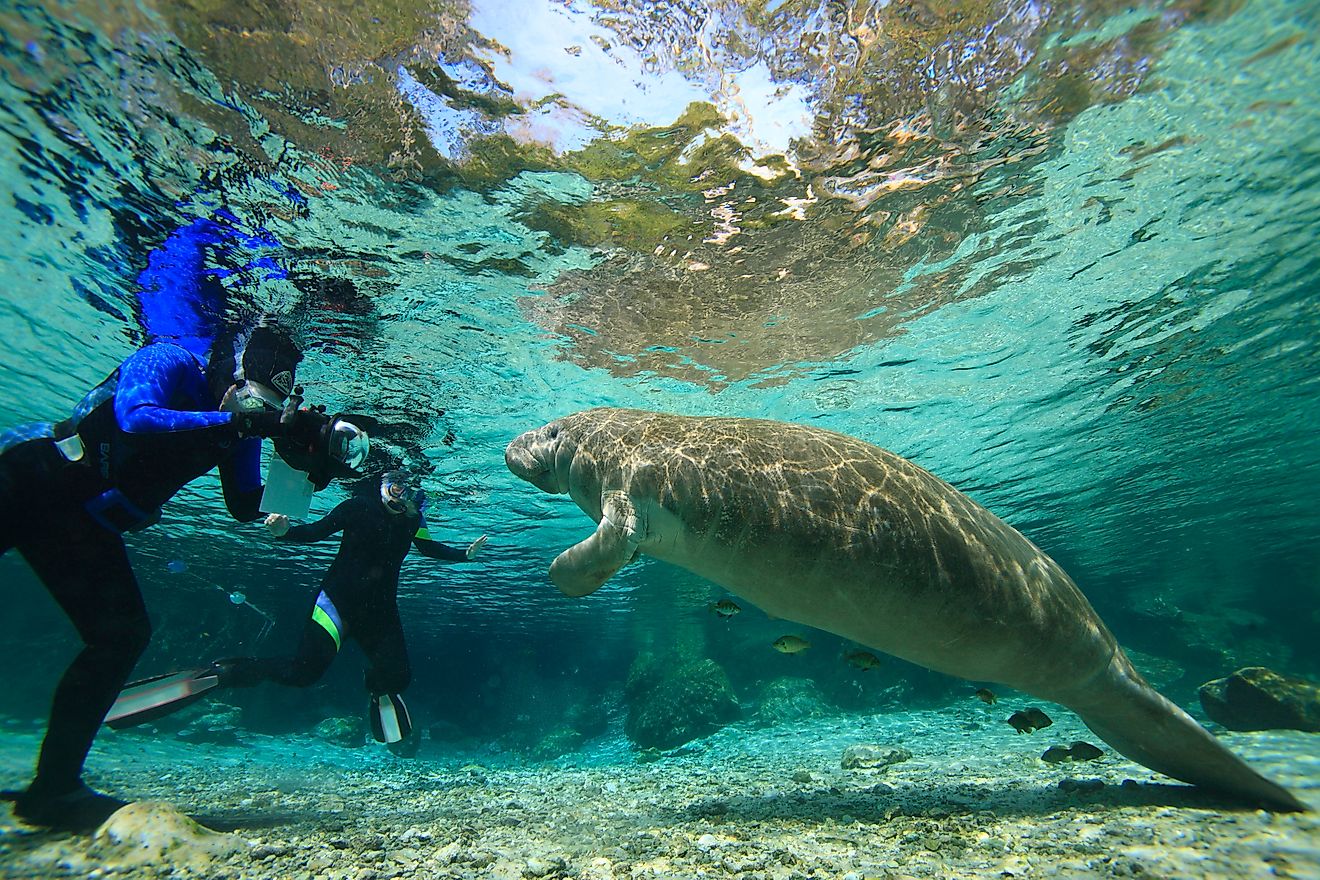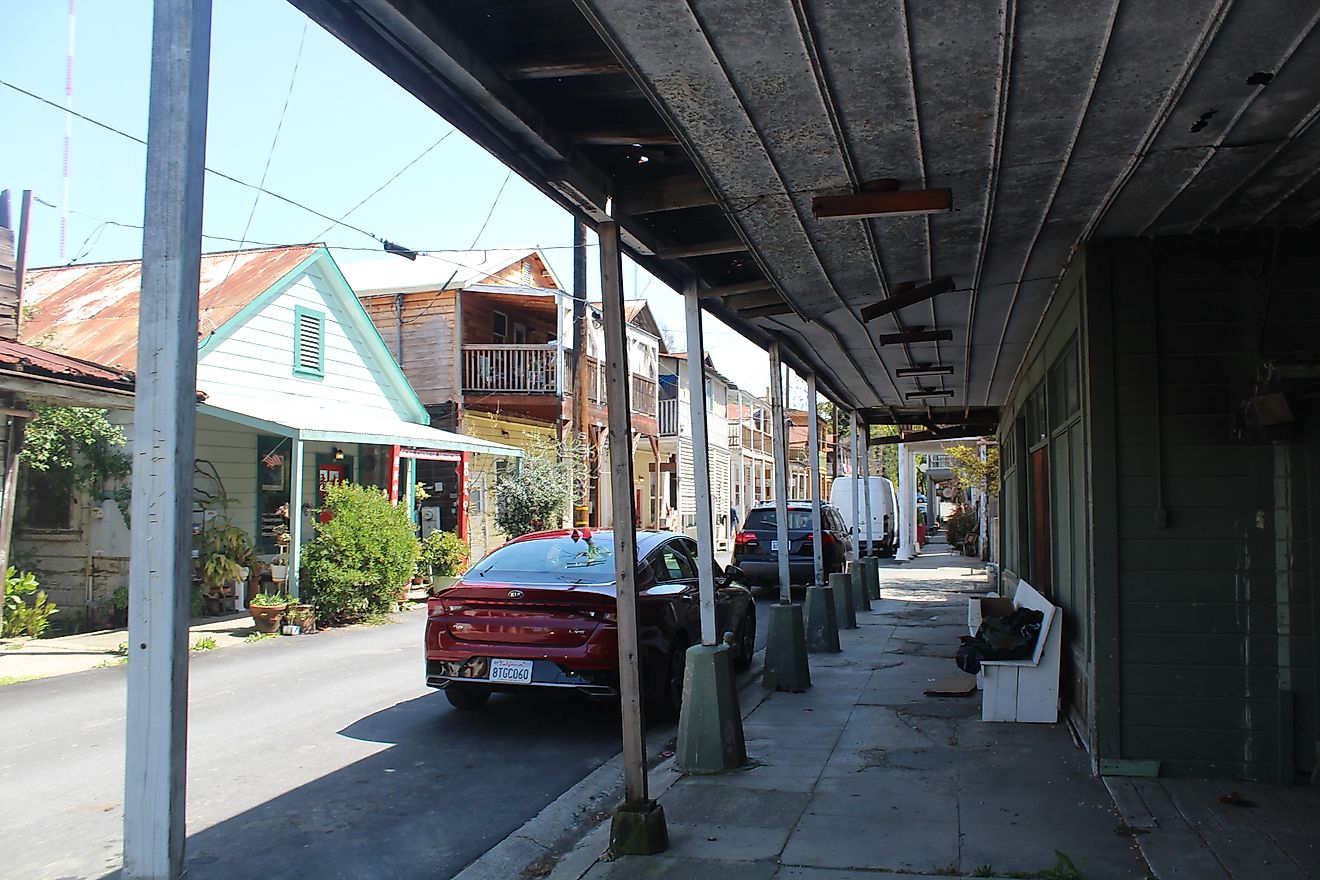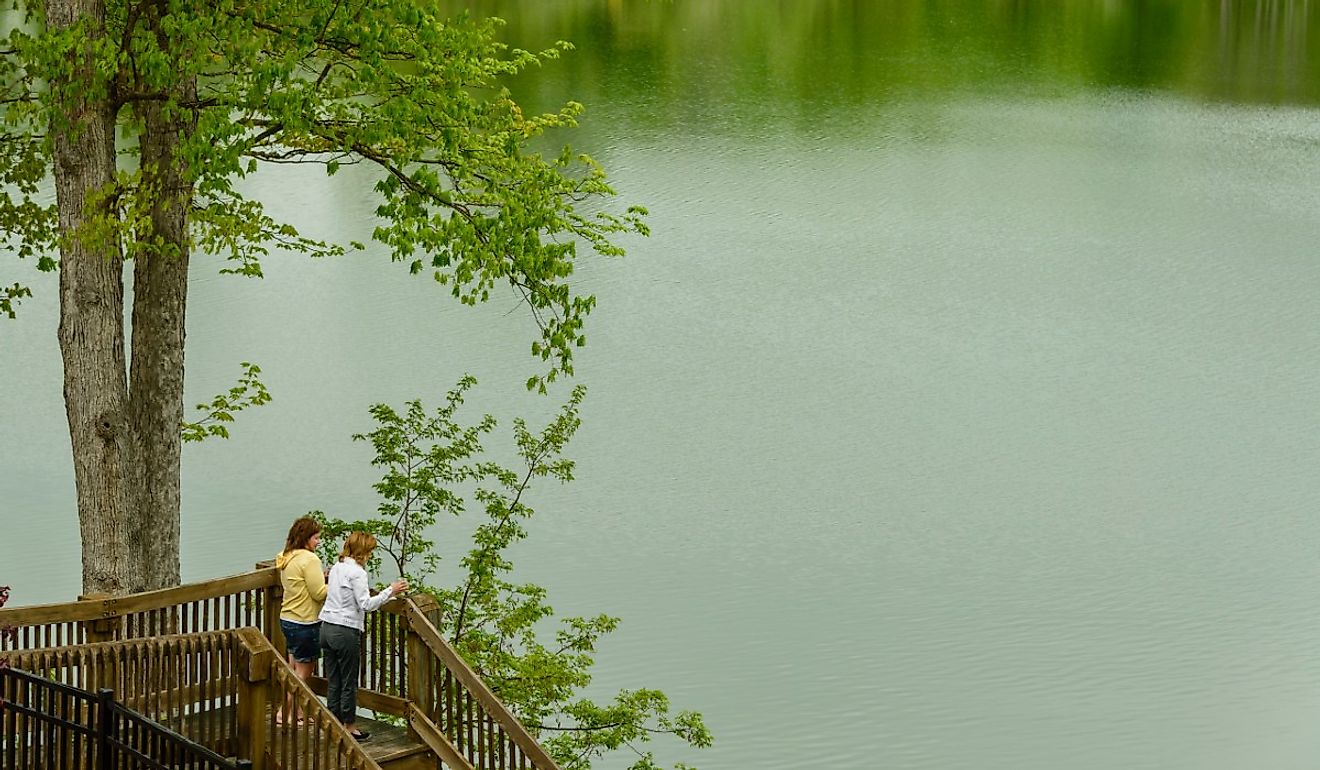
9 of the Strangest Landmarks in West Virginia
Hidden in the rugged Appalachian Mountains, West Virginia is steeped in mystery, history, and folklore. From the eerie sightings of the Mothman in Point Pleasant to the ghostly halls of the Trans-Allegheny Lunatic Asylum in Weston, the Mountain State is a mystery box of strange and intriguing ingredients. It’s a place where a massive roadside teapot in Chester can stand alongside the haunting remnants of Nuttallburg’s coal-mining past and where the Flatwoods Monster has been immortalized in both legend and local pride. These odd and curious attractions are some of the strangest landmarks in West Virginia, making the state a destination for adventurers, Instagrammers, road-trippers, and fans of the out-and-out weird.
Mothman Statue, Point Pleasant
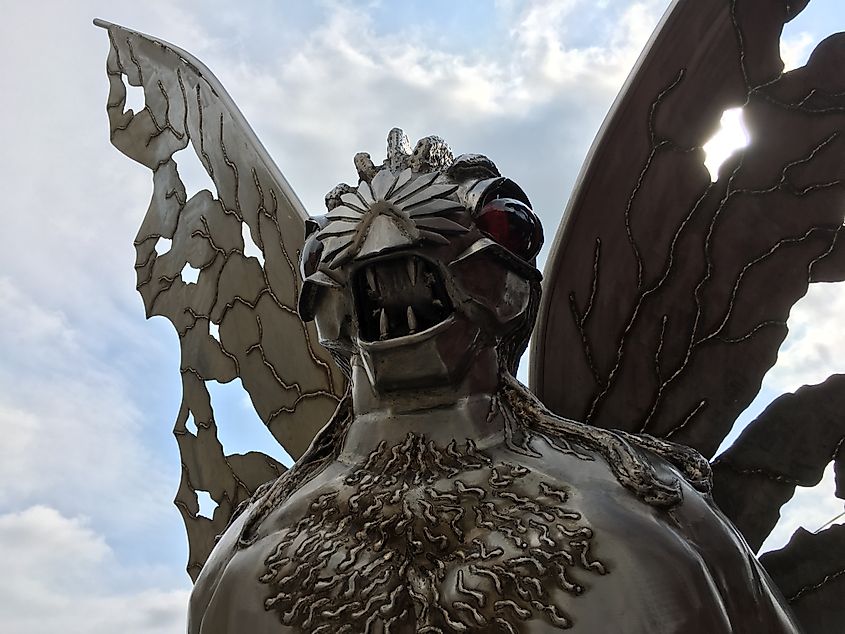
The Mothman Statue in Point Pleasant is genuinely the stuff of legends. Famous worldwide, the Mothman is a cryptid or mythical beast reportedly seen in the Point Pleasant area from November 15, 1966, to December 15, 1967. As the story goes, witnesses first spotted a terrifying creature in the West Virginia woods. Recounting the encounter to the local sheriff, they remarked the entity looked almost human, except for its glowing red eyes and 10-foot wing span. Today, the legend of the Mothman is deeply intertwined with tourism in the small town of Point Pleasant, which had a population of 3,855 in 2024. Thanks to a book by noted author and ufologist named John Keel called “The Mothman Prophecies,” a film adaption starring Richard Gere, The Mothman Museum, and the annual Mothman Festiva held the third weekend of September, the town welcomes about 15,000 visitors annually.
The Mystery Hole, Ansted
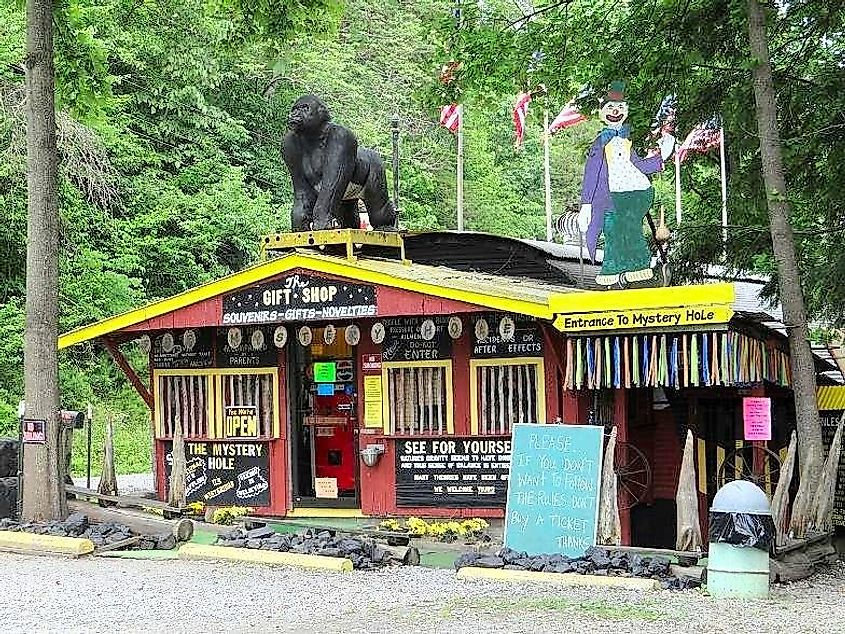
The Mystery Hole is a quirky roadside attraction in Ansted. Established in 1973, when the popularity of family road trips and car culture made travel by car a popular way for families to spend time together, roadside attractions filled with curiosity provided entertaining stops along the way. Enter the Mystery Hole, an attraction where visitors can marvel at balls rolling uphill, chairs balanced at odd angles, and people feeling disoriented as if gravity has gone haywire. The Mystery Hole joins other gravity-defying spots that use optical illusions and clever engineering tricks to create unique experiences for travelers, including California’s Mystery Spot in Santa Cruz and the Oregon Vortex in Gold Hill, Oregon.
Nuttallburg Historic Site, Fayetteville
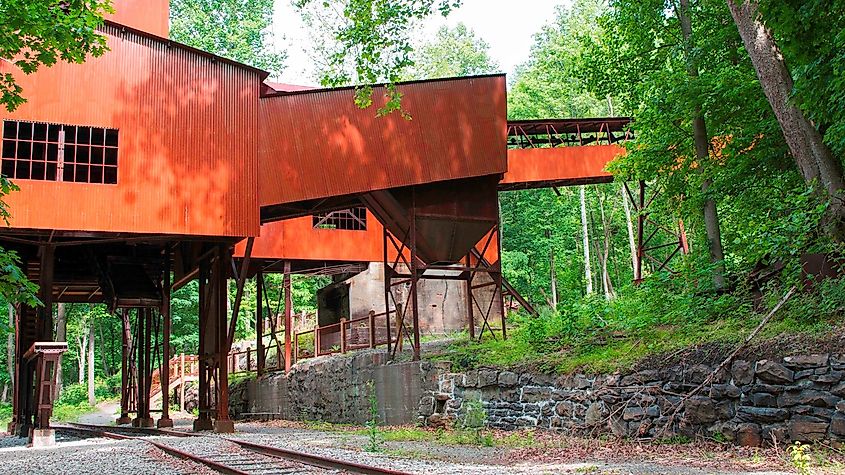
In the late 19th century, Nuttallburg was a bustling coal mining community built by coal prospector John Nuttall, who saw opportunity in the New River Gorge area and seized it. The mine flourished and was purchased by the Ford Motor Company to power their factory in Dearborn, Michigan; it eventually shut down due to railroad regulations. The mine was sealed in 1958, but the haunting ruins of the old conveyor and processing facility remain, as do the railroad tracks and coke ovens. Today, Nuttallburg is a historical landmark and ghost town cared for by the U.S. National Park Service and a hiking destination for trail enthusiasts who love a challenge.
Prabhupada's Palace of Gold, Moundsville
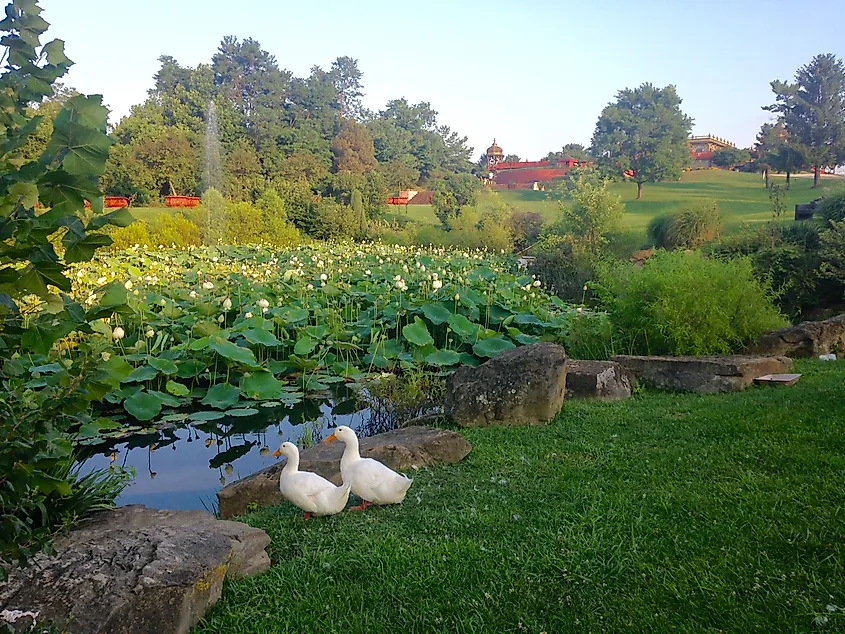
Moundsville in rural West Virginia may seem like an unlikely location for a dazzling Hare Krishna palace resembling an Indian temple, but that’s where visitors will discover Prabhupada's Palace of Gold. Called “America’s Taj Mahal,” the palace was initially built by the followers of His Divine Grace A.C. Bhaktivedanta Swami Prabhupada (1896-1977), known as Srila Prabhupada, a well-respected Vedic scholar who founded the International Society for Krisha Consciousness (ISKCON). ISKCON is popularly known as the “Hare Krishna” movement. The palace is a devotional place of worship for ISKCON devotees who go to deepen their spiritual practice. It’s also a top tourist attraction for visitors who marvel at the architectural design of the palace, stained glass windows, and marble floors. There is a vegan restaurant called Govinda’s Restaurant onsite, Sunday brunches in the palace’s award-winning Rose Garden, and visitors can stay overnight at the nearby Palace Lodge.
World’s Largest Teapot, Chester
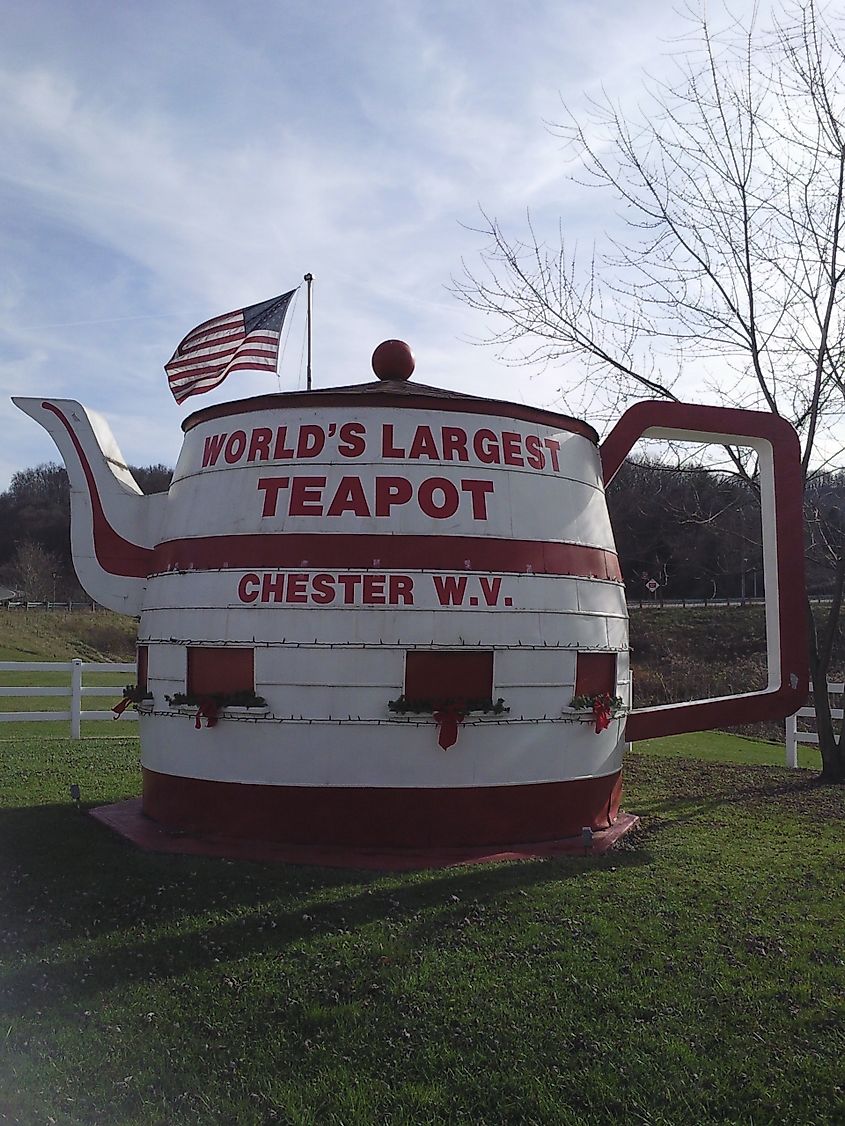
The World’s Largest Teapot began life in 1938 as a giant root beer barrel for an advertising campaign in Pennsylvania. An entrepreneur bought the barrel, shipped it to Chester, and converted it into a teapot to promote his pottery business in the then-thriving pottery industry in Chester and nearby East Liverpool, Ohio (aka, “The Pottery Capital of the World”). The teapot was relocated next to a bypass and turned into a concession stand that sold snacks and souvenirs to visiting tourists. The Teapot is about 14 feet tall and 14 feet in diameter. The town holds a Teapot Day every August to raise money for the attraction’s upkeep.
Flatwoods Monster Museum, Sutton
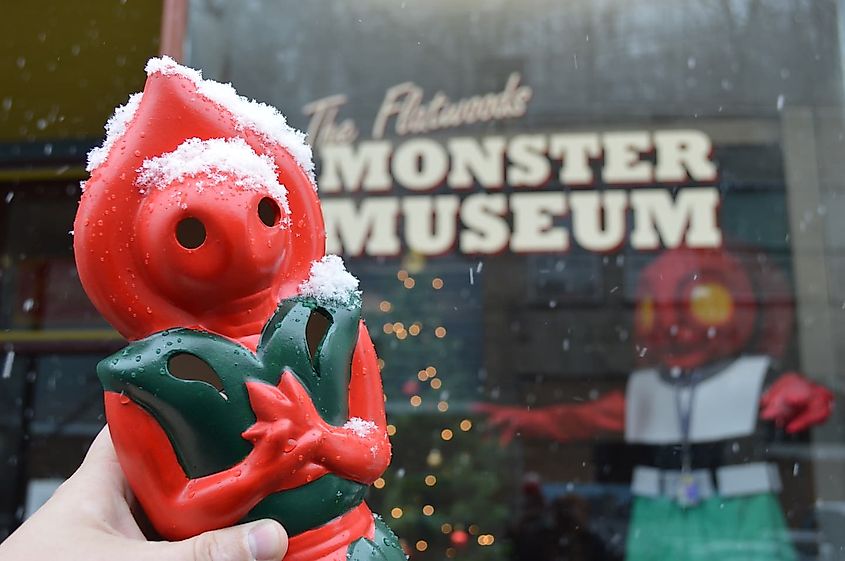
The Flatwood Monster, sighted in Sutton, Braxton County, on September 12, 1952, predates Mothman by almost fifteen years. According to legend, several witnesses—including six boys, a mother, and a dog—spotted a bright object streaking across the sky before crash-landing on a nearby hill. Descriptions of the monster vary, but witnesses report seeing a ten-foot-tall levitating creature with glowing eyes, a head shaped like a shovel, wearing a metallic dress. The story made the local news, then the national news, and tourism in the small community got a boost. Was it a UFO? In 1947, one of the most famous UFO sightings occurred in Roswell, New Mexico, and UFO hysteria was high during the Cold War era. UFO enthusiasts can learn more about the monster and all things extraterrestrial at the Flatwood Monster Museum, which is dedicated to the mysterious alien-like creature.
Trans-Allegheny Lunatic Asylum, Weston
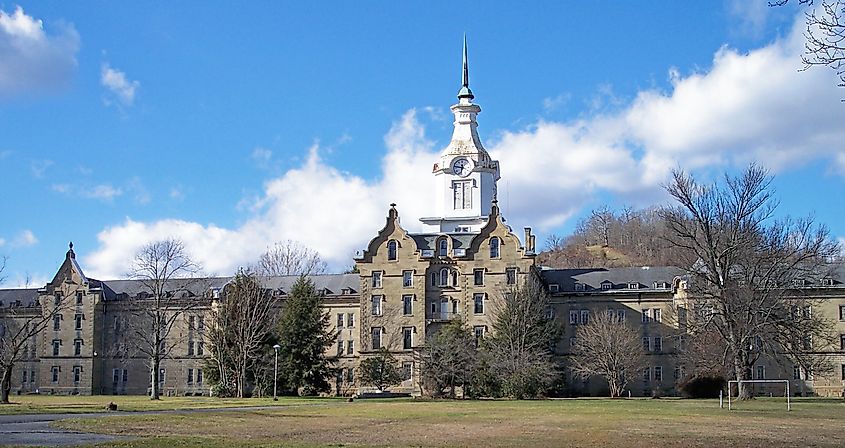
The Trans-Allegheny Lunatic Asylum in historic Weston was a hospital for the mentally ill during the mid-1880s. Thanks to its imposing architecture and haunted history, it remains one of the most famous historic psychiatric hospitals in the U.S. Designed to house patients with mental illness, it followed the Kirkbride Plan, an architectural philosophy developed by mental health reformer Thomas Story Kirkbride, who believed the structure of an asylum could contribute to the well-being and recovery of its patients. Today, the asylum is a National Historic Landmark, offering various tours, like the 45-minute “Criminally Insane Tour” or the in-depth 6-hour “Discover the Asylum Tour.” The asylum has been used as a set for several movies and appears in the 2002 film, “The Mothman Prophecies.”
Congressional Fallout Shelter at the Greenbrier Resort, White Sulphur Springs
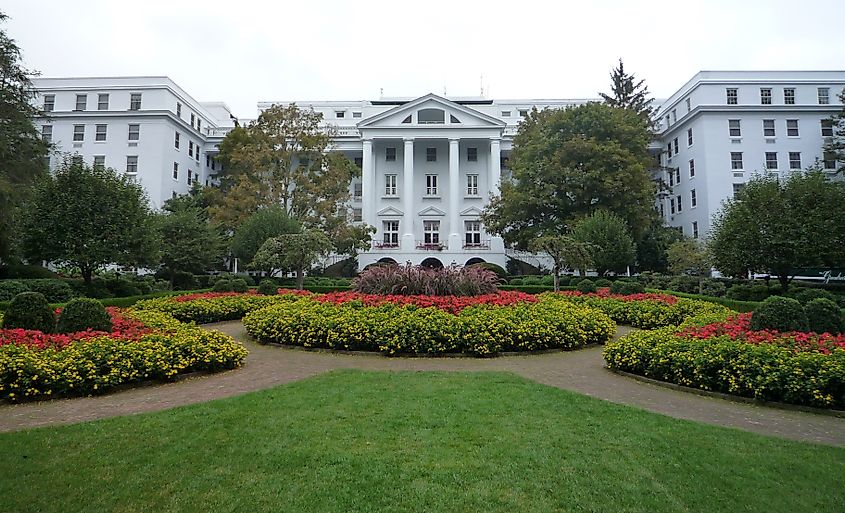
In the mid-1950s, when Cold War tensions between the former Soviet Union and the United States were at an all-time high, the U.S. government covertly built a fallout shelter under the Greenbrier Resort in White Sulphur Springs. The shelter was intended to house the entire U.S. Congress in the event of a nuclear attack. Built to accommodate more than 1,100 people, the 112,544-square-foot bunker had 18 dormitories, a cafeteria, a hospital, and a broadcast center. It remained top secret until it was exposed in a 1992 essay, “The Last Resort,” by The Washington Post. The Greenbrier Resort first opened its doors in 1778. Today, the luxurious resort in the Allegheny Mountains still welcomes overnight guests and offers 90-minute tours through the historical landmark bunker.
The Farnham Colossi, Unger
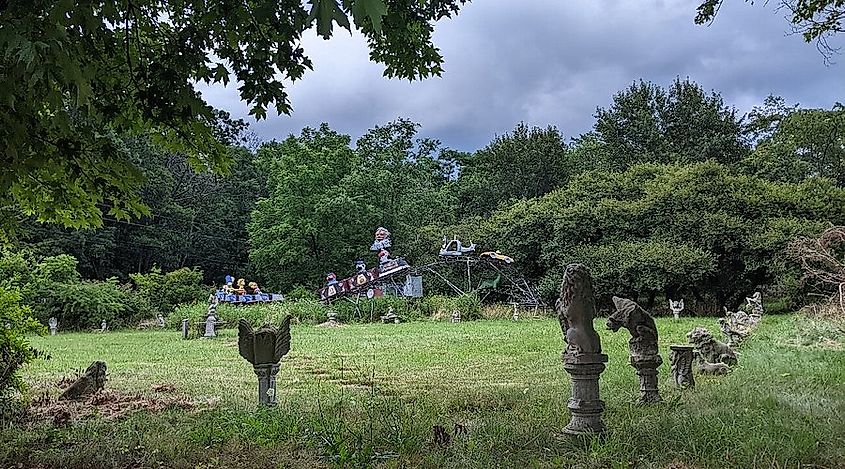
Part junkyard, part tribute to America’s love of travel, the small rural town of Unger is home to more than 20 enormous fiberglass figures, originally used to attract drivers during the heyday of the American road trip in the 1960s. Known as “Muffler Men,” the collection started when homeowners George and Pam Farnham purchased a 25-foot-tall Muffler Man from a Midas Muffler Shop in California. Over the years, other mascots from gas stations, automotive stores, amusement parks, and fast food chains have joined the Muffler Man, including a 30-foot-tall grocery clerk named Big John, an enormous Paul Bunyan, and a sunglass-wearing surfer named Brian Wilson.
There is no shortage of strange landmarks in West Virginia, like the Mystery Hole in Ansted, a gravity-defying optical illusion attraction, and the Lake Shawnee Abandoned Amusement Park in Rock, known for its eerie history and paranormal ties. Prabhupada's Palace of Gold offers stunning architecture and spiritual allure, while the Congressional Fallout Shelter at the Greenbrier Resort is a Cold War relic. The Farnham Colossi in Unger, featuring giant fiberglass figures, adds a quirky touch to the state’s collection of strange, historically rich attractions. Often referenced in pop culture and documentaries, these sites attract visitors seeking mystery, history, and nostalgia.
